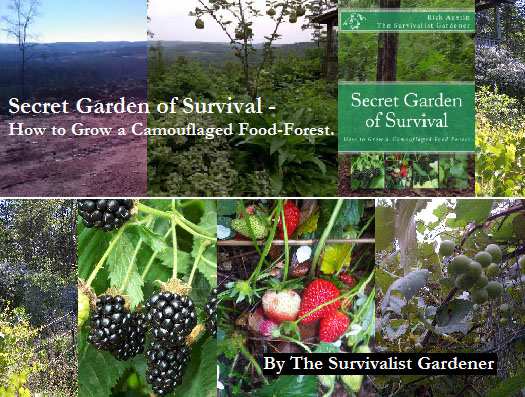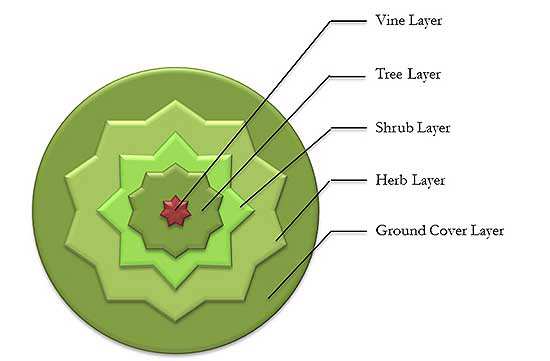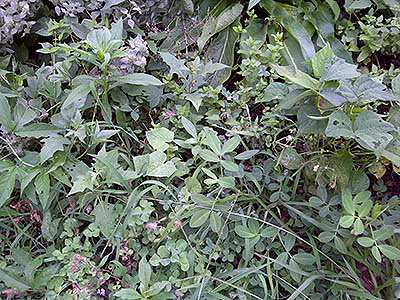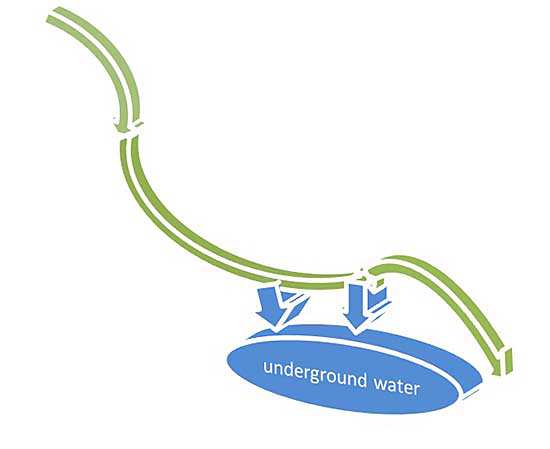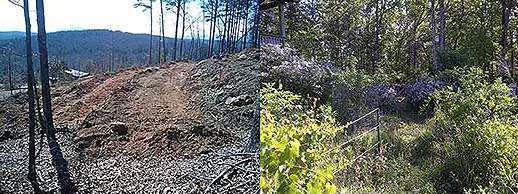How to Grow a Camouflaged Food-Forest
What are you and your family (and livestock, if you have livestock) going to eat when your food stores run out? How will you replenish a year’s food storage, and then feed yourself each and every year after that? And how do you keep others from stealing it?Look at these two photos above.
Which one of these is a garden?
Which one produces more food?
Which one will the unprepared hordes attack?
Answer: They are both gardens, but the one on the left produces 5x more food per square foot than the traditional row garden on the right.
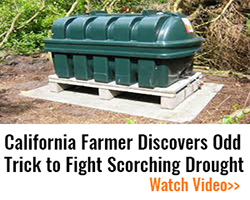 Furthermore, the one on the left only has to be planted once in a lifetime, provides food for 30 years; never has to be weeded, never needs fertilizer and never needs pesticide — ever.
Furthermore, the one on the left only has to be planted once in a lifetime, provides food for 30 years; never has to be weeded, never needs fertilizer and never needs pesticide — ever.
And it is disguised to look like overgrown underbrush, so nobody knows you have food growing there.
What it is… In the Secret Garden of Survival we let nature do what nature does best…the way nature has grown plants for millions of years. – The Secret Garden of Survival™ uses what some have called “Permaculture” (or “permanent agriculture”), but it does so on a larger scale and in a more natural way, using what I have termed, “NatureCulture™” . The beauty of this for a prepper, is that you only have to plant once – and then you harvest for a lifetime.
In the Secret Garden of Survival, we use “companion planting”, where you put plants together that have a symbiotic relationship – a relationship where each plant supports and benefits from the other. (If you have ever heard of the book Carrots Love Tomatoes, it’s like that, only bigger.)
We use plants to naturally attract “good bugs” that will pollinate your plants and that will also prey on and kill the “bad bugs” that you don’t want in your garden.
We use plants to keep away four legged pests too. For example, if you plant onions around the base of a fruit tree, mice won’t go near the tree in the winter and gird it. Likewise, if you plant daffodils around the drip line of a tree, deer won’t go near it.
We plant in “guilds” instead of rows. Guilds are like a mini ecosystem of concentric circles of symbiotic plants planted around the central tree of the guild, such as a fruit or a nut tree. This tall tree ends up producing a canopy of leaves, and shade loving plants grow under the tree. Then outside the shade, shrubs (such as blueberries or blackberries) are planted around your tree in full sun. Then herbs are planted around your shrubs, and then ground cover is planted around your herbs. Since vines naturally grow on trees (there are no trellises in nature), a vine layer (like grapes) grows up your central fruit or nut tree.
Layers of a Guild (Top Down View)
We grow plants in three dimensions – so you can put more plants in the same area, which will significantly increase the amount of food you produce per square foot of garden space. (In fact, you can grow 5X more food per square foot in this type of garden, than you could in a traditional row garden.)
Not only can you grow more plants in less space, but the individual plants grow better this way too! Amazingly, the grape vines that we planted next to, and have growing on, our fruit trees, have always produced far more grapes than those vines that we planted on traditional vineyard trellises.
This type of garden looks wild and over grown – and just like the art of camouflage – it all blends in, because it has no definable shapes or rows. It looks “natural”, not man-made.
Furthermore, once you have killed the predator bugs that were protecting your plants, the “bad bugs” can invade at will, and then your garden suddenly becomes a smorgasbord without anyone there to protect it.
Additionally, these pesticides end up in the soil and they can kill the good microorganisms that allow your plants to be able to take up nutrients.
Nature has its own way of keeping things in balance. When you interfere with nature’s balance by using chemical pesticides, you end up creating an even bigger problem for yourself and your plants – and- you could end up with no crops at all…
Even worse, some of these pesticides are systemic. In other words, once they end up in the soil they can then be absorbed throughout the entire system of your plant. So your plants will then carry these pesticides through their roots, into their stems, into their leaves, and into their pollen, thus killing even more good bugs. And if you can ever get fruit to grow under these conditions, these pesticides will now be inside of the food you are going to eat.
Lastly – where do you think you are going to get pesticide when the grid goes down anyway? When there are no stores, and no transportation, there will be no commercial pesticide available. It is far better to never start using them.
It’s not using fertilizer – In nature, plants grow just fine without commercial fertilizer. Yet almost all commercial farming, and most residential gardens, rely on it. The problem is that using commercial fertilizer is a lot like giving your plants addictive drugs…and once they are addicted, they have a hard time living without it.
And just like pesticide above, where are you going to get commercial fertilizer after TEOTWAWKI (The End Of The World As We Know It)?
…By the way, since the day we started our Secret Garden of Survival, we have never used one single ounce of pesticide or one single once of fertilizer on our plants, and we have always had more food than we could possibly consume.
It’s not watering – Once your plants are established, there is little to no need for watering in the Secret Garden of Survival. That is because the best place to store water for your garden is in the ground.
In NatureCulture™, we use swales (berms and terraces) to store water. (See the illustration below.) When water drains down into the terrace, it is stopped from flowing further down-hill by the berm on the terrace. The water then seeps into the ground. A lens shaped pool of water forms under the berm. This water is available to the roots of the plants on the berm.
During droughts, when everyone else’s plants were dying, our plants were healthy and green.

In 2 years- we went from red clay to 12 ft. high blackberries, 15 ft. fruit trees that were bearing fruit, and a lush green food forest that passers-by could not recognize as a “garden”.
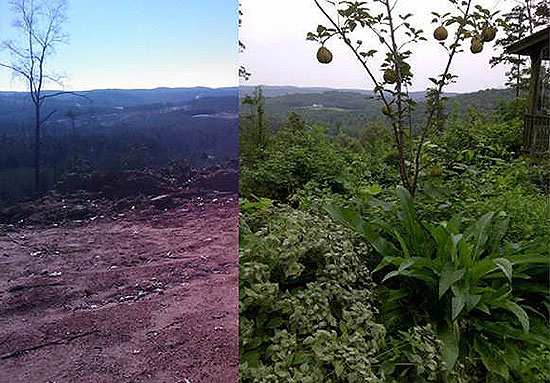 Now that you know the basics of what it is, and why it works, if you would like to find out how you can do this, you can get Rick Austin’s book: Secret Garden of Survival- How to Grow a Camouflaged Food-Forest, a simple, straight-forward, step by step approach to creating your own Secret Garden of Survival, on any size lot, in just one growing season. Available in hardcopy at amazon.com or electronically, in Kindle and Nook versions. Or to find out more information go to www.SecretGardenOfSurvival.com
Now that you know the basics of what it is, and why it works, if you would like to find out how you can do this, you can get Rick Austin’s book: Secret Garden of Survival- How to Grow a Camouflaged Food-Forest, a simple, straight-forward, step by step approach to creating your own Secret Garden of Survival, on any size lot, in just one growing season. Available in hardcopy at amazon.com or electronically, in Kindle and Nook versions. Or to find out more information go to www.SecretGardenOfSurvival.com
